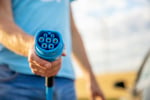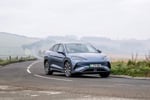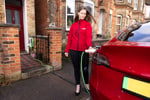In 1998, six vehicle recovery operatives were killed, according to the SURVIVE report on hard shoulder and motorway safety, jointly funded by the AA and RAC.
The report calls for better public education on use of the hard shoulder and for standards developed to improve safety for all organisations that use the safety lane as part of their work. According to the report, 9% of drivers stop on the hard shoulder for non-emergency reasons, including tiredness. The AA is introducing ARE, the automatic recovery equipment vehicle, which is intended to speed up the recovery process by providing rescue vehicles with an innovative system for towing vehicles from the roadside if they cannot be fixed.
About 100 of the new vehicles will be taking to the road over the next three to four months for tests of new retractable towing devices. If they prove effective, then up to 800 could join the fleet.
Currently, the system is based around a Volkswagen T4 but could be adapted for other vehicles, including the current Vauxhall range that dominates the AA fleet. The AA launched the design, based around a concept vehicle shown at previous motor shows, including the Fleet Show, to gauge reaction from drivers.
Alistair Cheyne, director of road service operations for the AA, said: 'Our main aim is always to fix members' cars at the roadside, but with ARE, we can recover it there and then using the same vehicle, reducing the time spent on dangerous hard shoulders.'
The AA is also trialling portable computers, called VIXEN, that can diagnose in five minutes potentially baffling faults in cars' increasingly complex electronic systems. Vehicles are also being fitted with route guidance systems, which in the next few years will be spliced with the AAHELP automatic despatch system so drivers will be sent directly to a job with no need to plan their route first.













Login to comment
Comments
No comments have been made yet.